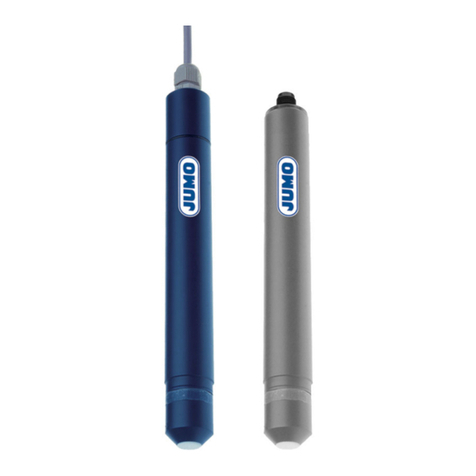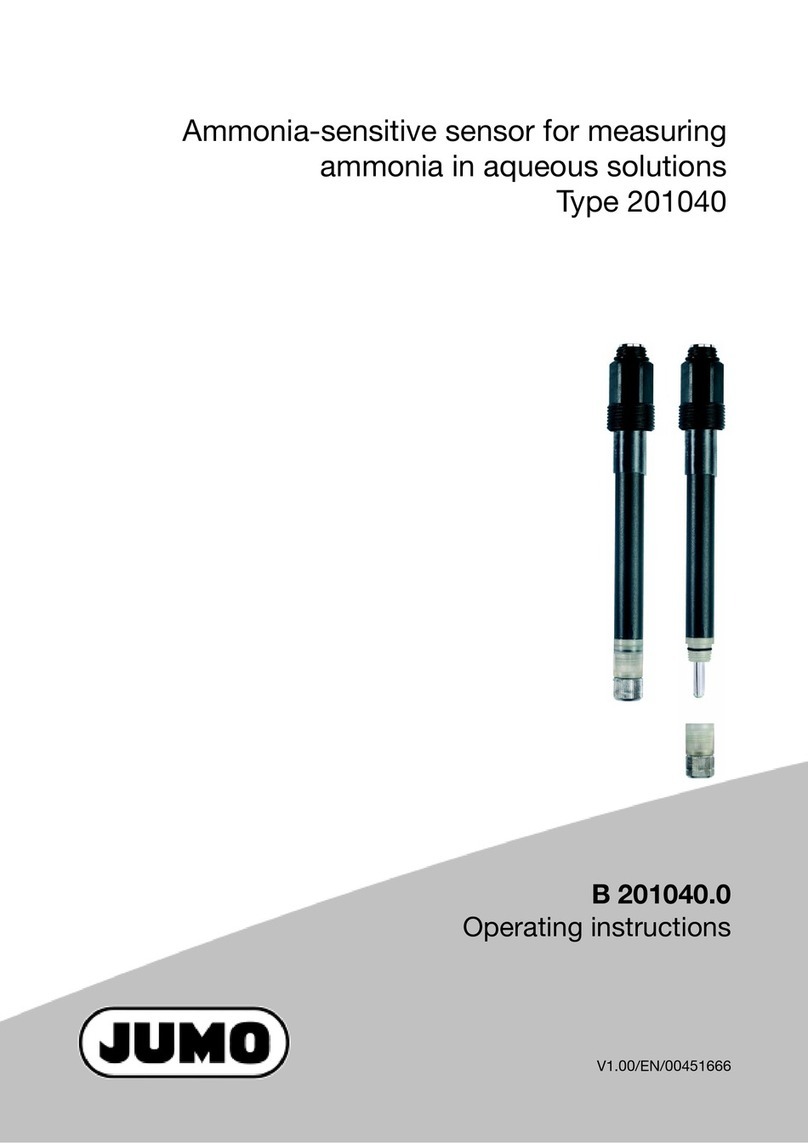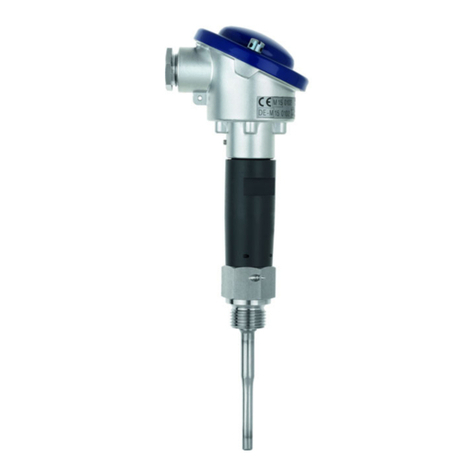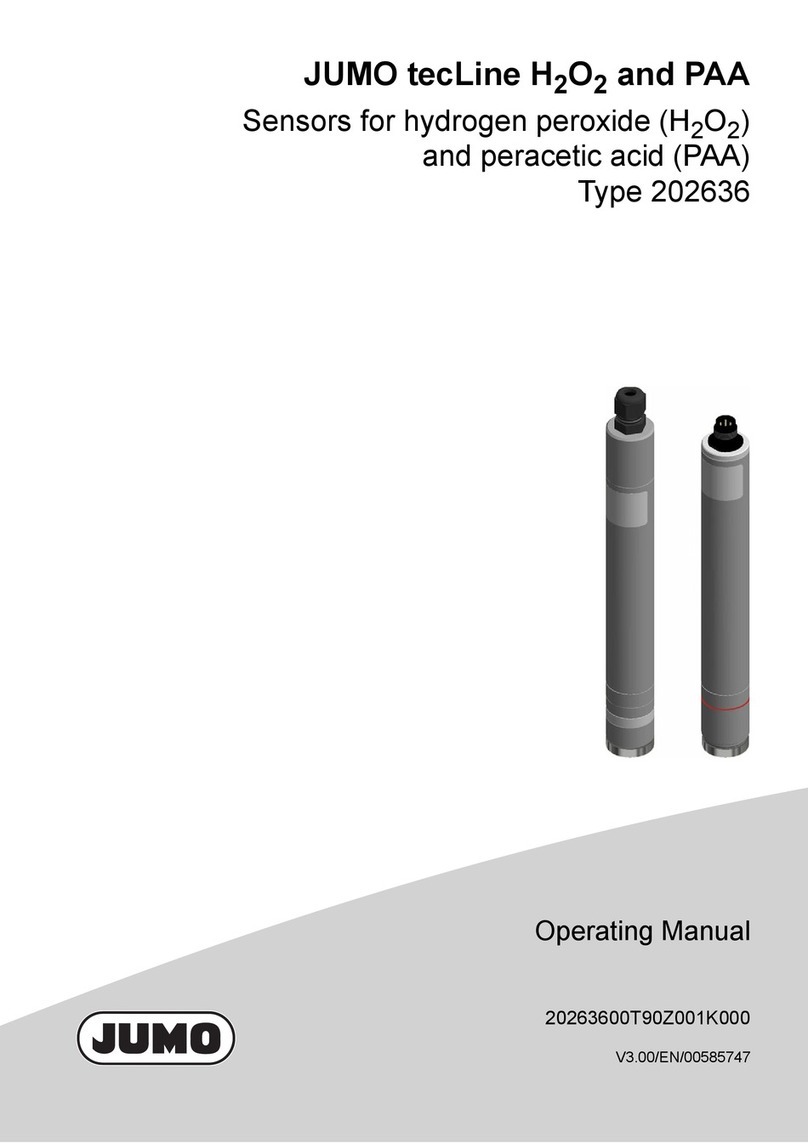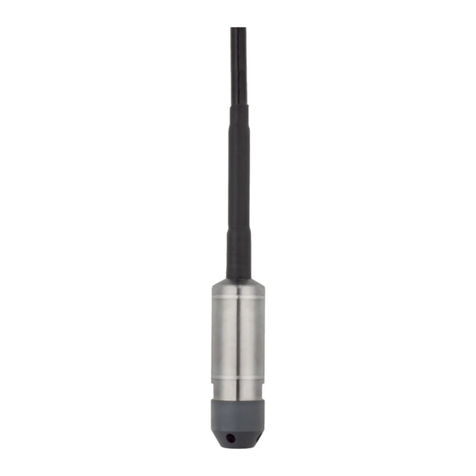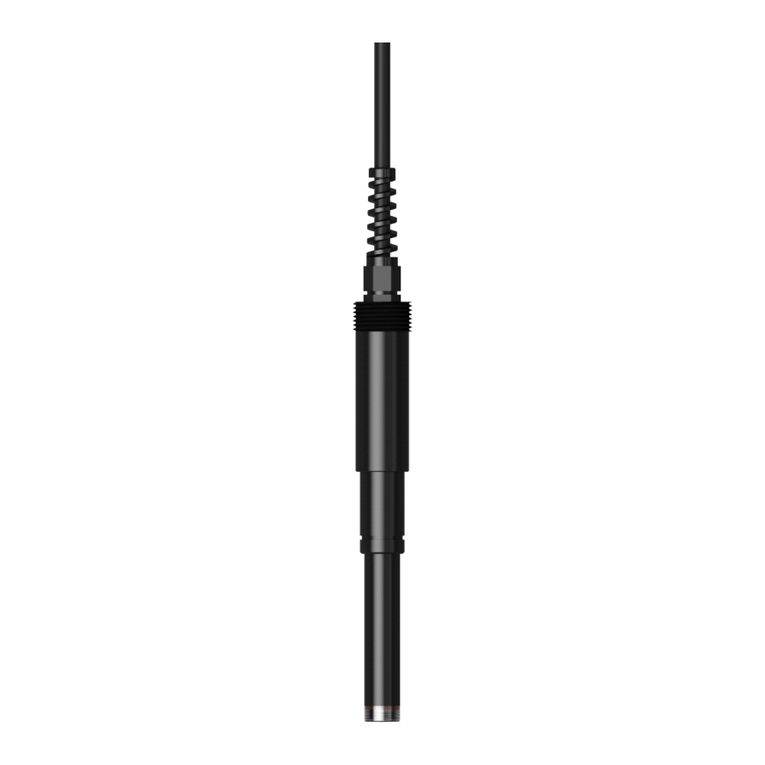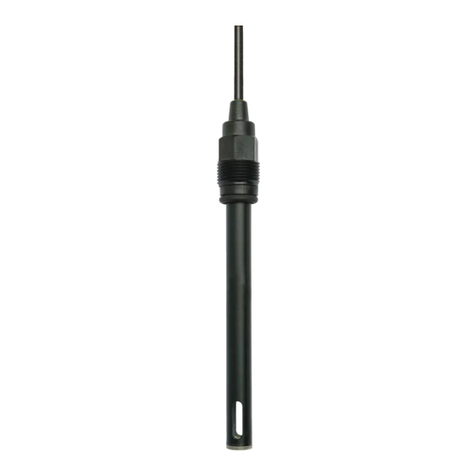
6
2 Description
General
Conductive conductivity sensors are used in conjunction with suitable
transmitters in industrial analysis measurement technology to determine the
electrolytic conductivity of liquids.
The JUMO tecLine CR-4P fills the gap between conductive conductivity
measurement with two-electrode measuring sensors, and inductive
conductivity measurement.
Four-pin technology makes it possible to cover a very wide measuring range
from about 1 µS/cm to 600 mS/cm, with just one measuring sensor.
The hygienic design of the sensor and the EHEDG-certified system for process
connection (JUMO PEKA), mean that it can be used in pharmaceutical and
food technology without difficulty. JUMO PEKA is an adapter system that
combines the measuring sensor with the process connection. All the materials
are physiologically safe, and meet FDA standards.
Stainless steel electrodes are inserted into a circular, plastic body. The process
seal provided as standard is an EPDM O-ring. A fast-response temperature
probe delivers information about the process temperature to the measurement
amplifier. Electrical connection is made via an M12 connector.
The measuring sensor is available in three fitting lengths, for optimum
installation in different pipe diameters. The measuring sensor can also be
installed in container walls. No incident flow is required to make it work, but is
recommended for fast, stable measurement values and to prevent the
accumulation of deposits.
A certificate of quality is included among the items supplied (exact cell
constant, FDA approval for the material, typical surface roughness, etc.).
Operative range
Their vast measuring range of 1 µS/cm to 600 mS/cm, allows the sensors to
be used in washing processes in food and drink applications, pharmaceuticals
and biotechnology, where the different conductivities have to be safely
recorded by a measuring system (e.g. CIP/SIP applications, reverse processes
in ion exchangers, phase separation, bottle cleaning plants, process water).
Note
Used in combination with the JUMO AQUIS 500 CR transmitter/controller, as
per data sheet 202565 and JUMO PEKA process connection adapters as per
data sheet 409711.
Key features
• Vast measuring range
• EHEDG-certified process connections (clamp, Varivent®, aseptic NKS)
• CIP/SIP capability
• Design complies with EHEDG and FDA standards
• Certificate of quality included
